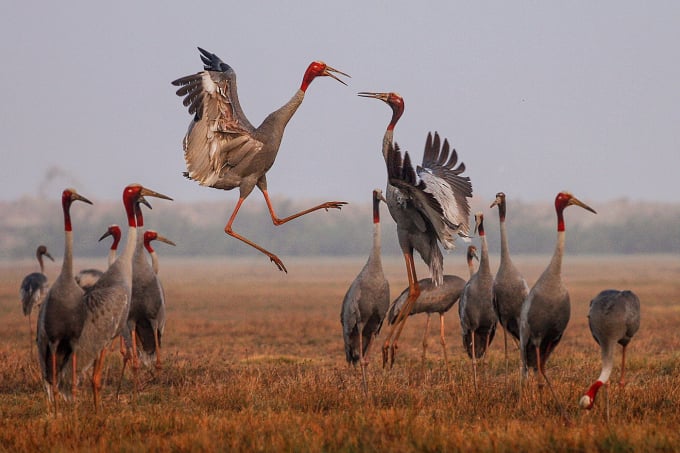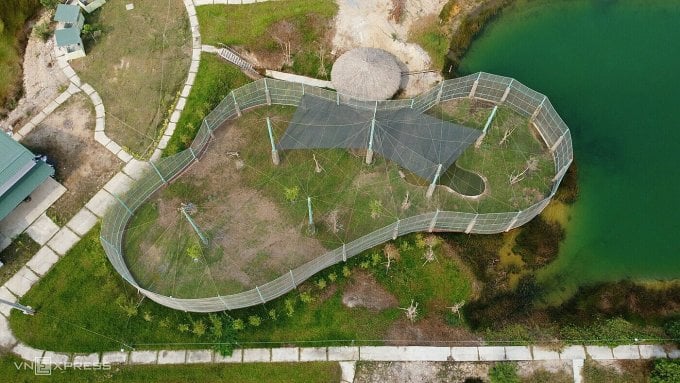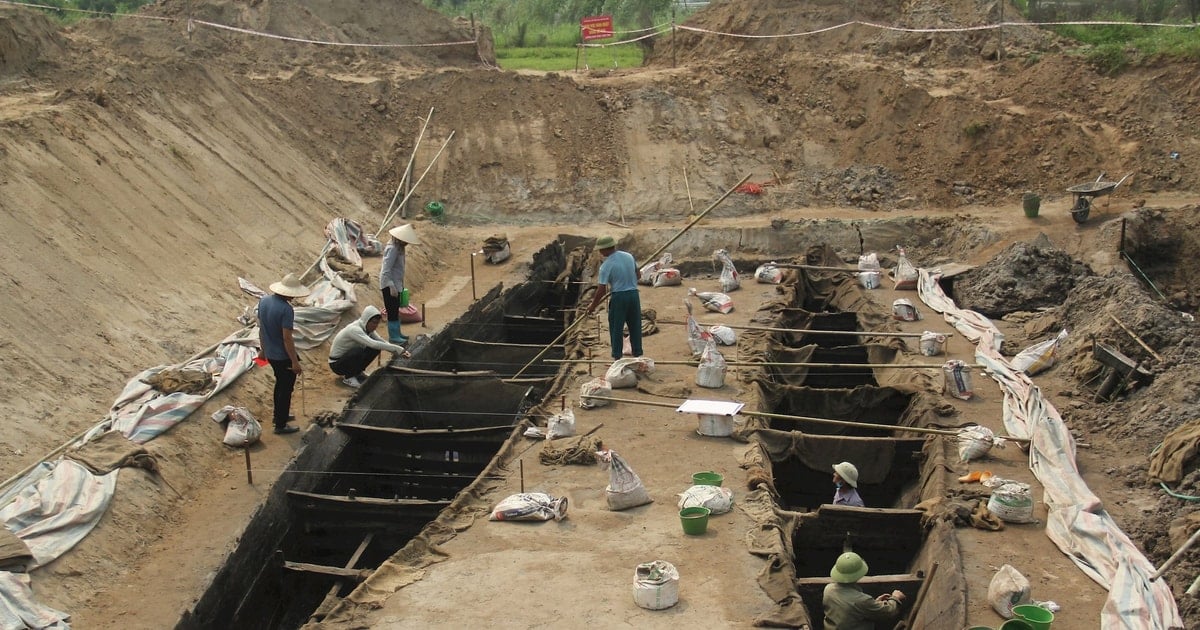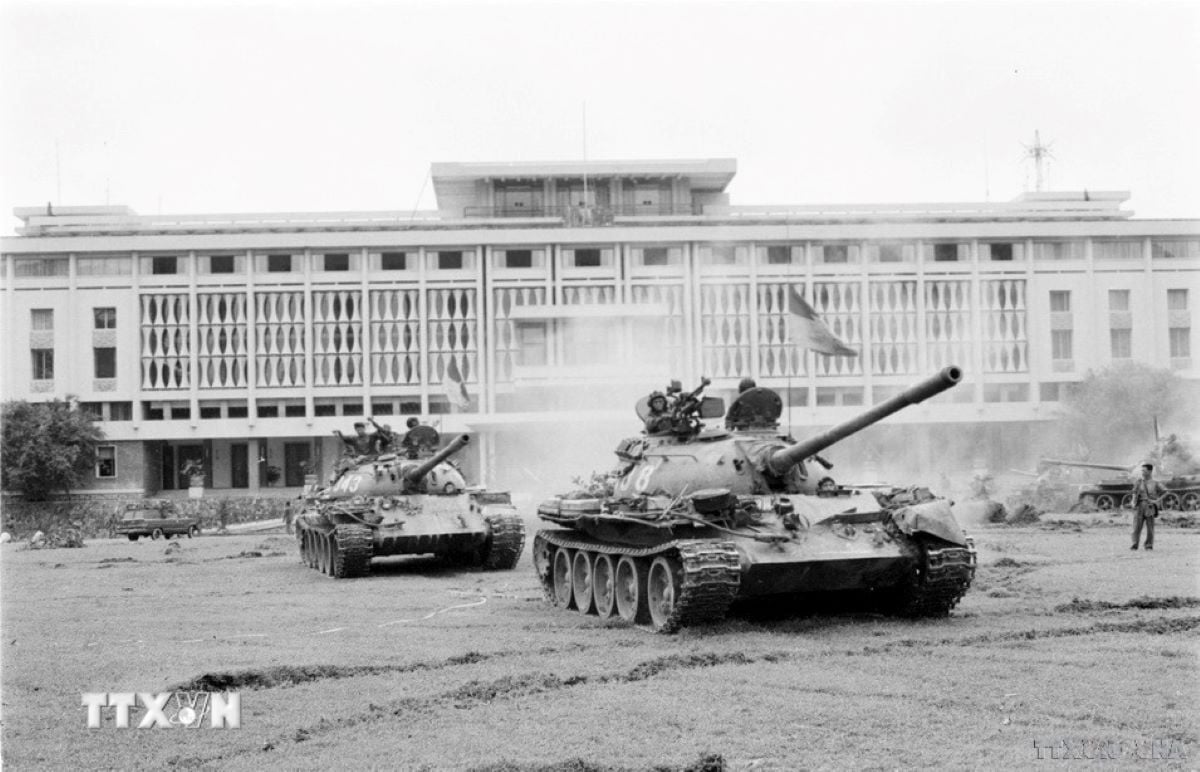Dong Thap : 10 years of conservation, meticulous care, breeding, and restoration of a large ecological area... are the reasons why the total cost of developing the crane flock is more than 185 billion VND.
Dong Thap recently approved a project to conserve a flock of cranes imported from Thailand, implemented in Tram Chim National Park. Of the total cost, about 56 billion VND is for receiving, transferring, raising, breeding and releasing cranes; 24 billion VND is for ecological restoration; 35 billion VND is for building an ecological agricultural area and 51 billion VND is for investing in infrastructure equipment...
According to the plan, within 10 years, the province will receive 60 cranes from Thailand and agree to cover the cost of 1.2 million USD (nearly 30 billion VND) for the neighboring country to raise the cranes, train staff, send experts to inspect and support. The project aims to release 100 cranes into the wild, with a survival rate of 50%. In mid-December, Tram Chim received the first pair of cranes from Nakhon Ratchasima Zoo.

Red-crowned cranes migrated to Tram Chim in previous years. Photo: Tran Van Hung
Dr. Tran Triet, Director of the Southeast Asian Crane Conservation Program and project advisor, said that Thailand transfers 6-month-old cranes to Vietnam, 6 each year. When they arrive at Tram Chim, they are cared for for 4-6 months to get used to the new environment, before being released into the wild.
"The process of raising and training is very elaborate. The caretakers dress like mother cranes, not letting them see their faces or hear their voices to avoid the cranes clinging to them and losing their wild instincts," said the doctor.
In addition, the process of breeding and reproducing cranes is very complicated. Thailand spent 20 years researching, testing and failing many times. In the past 10 years, Thai people have successfully bred and re-released cranes, with direct costs of about 7 million USD and 3 million USD for investment in environmental education centers. Currently, Thailand has a flock of about 150 cranes in the wild, reproducing 15-20 baby cranes each year.

Raising and training cranes in Thailand before releasing them into the wild. Photo: ICF
According to experts, the cranes in the transfer program do not have the instinct to migrate seasonally, and only live around Tram Chim National Park. The cranes’ non-migration complies with the requirements of international conservation organizations, avoiding the decline of the flock when they fly to places where the environment is not controlled.
Therefore, the important issue, according to Dr. Triet, is that the park must ensure a suitable environment for cranes to live, not only in the core area of the national park but also in the nearby rice fields that must be produced in an ecological way. Farmers must limit the use of fertilizers and pesticides.
"Conserving cranes is not about money, but rather about achieving goals, from conserving critically endangered species, restoring the Tram Chim ecosystem, and accompanying the green agricultural development process of Dong Thap province," Dr. Triet shared.
Mr. Doan Van Nhanh, Deputy Director of the Center for Conservation and Development of Organisms of Tram Chim National Park, said that in the near future, the park will deploy many solutions to restore the ecosystem. Areas A1, A4, A5 - where cranes often live - will have their water levels lowered, and thick layers of vegetation burned to help the growth of the grass (the main food of cranes).

Crane cages in Tram Chim National Park. Photo: Tran Thanh
Tram Chim covers 7,500 hectares and is recognized as Vietnam's fourth Ramsar site. There are many rare bird species, especially red-crowned cranes that fly here from Cambodia to find food, staying there from December to April of the following year before leaving. In the 1990s, the park recorded a large flock of cranes, sometimes up to a thousand, but they have become increasingly rare, with some years when the birds did not return at all.
The red-crowned crane is distinguished by its red head and neck, grey stripes on the wings and tail. Adults are 1.5-1.8 m tall, have a wingspan of 2.2-2.5 m, and weigh 8-10 kg. Four-year-old cranes pair up to breed and spend a year raising their young before the next brood is born.
According to the International Crane Association, there are an estimated 15,000-20,000 red-crowned cranes in the world, of which 8,000-10,000 are distributed in India, Nepal, and Pakistan. In Indochina (mainly Vietnam and Cambodia), since 2014, about 850 red-crowned cranes were recorded, but by 2014 there were 234, and now there are about 160.
Ngoc Tai
Source link


































![[Photo] "Beauties" participate in the parade rehearsal at Bien Hoa airport](https://vstatic.vietnam.vn/vietnam/resource/IMAGE/2025/4/11/155502af3384431e918de0e2e585d13a)






























































Comment (0)